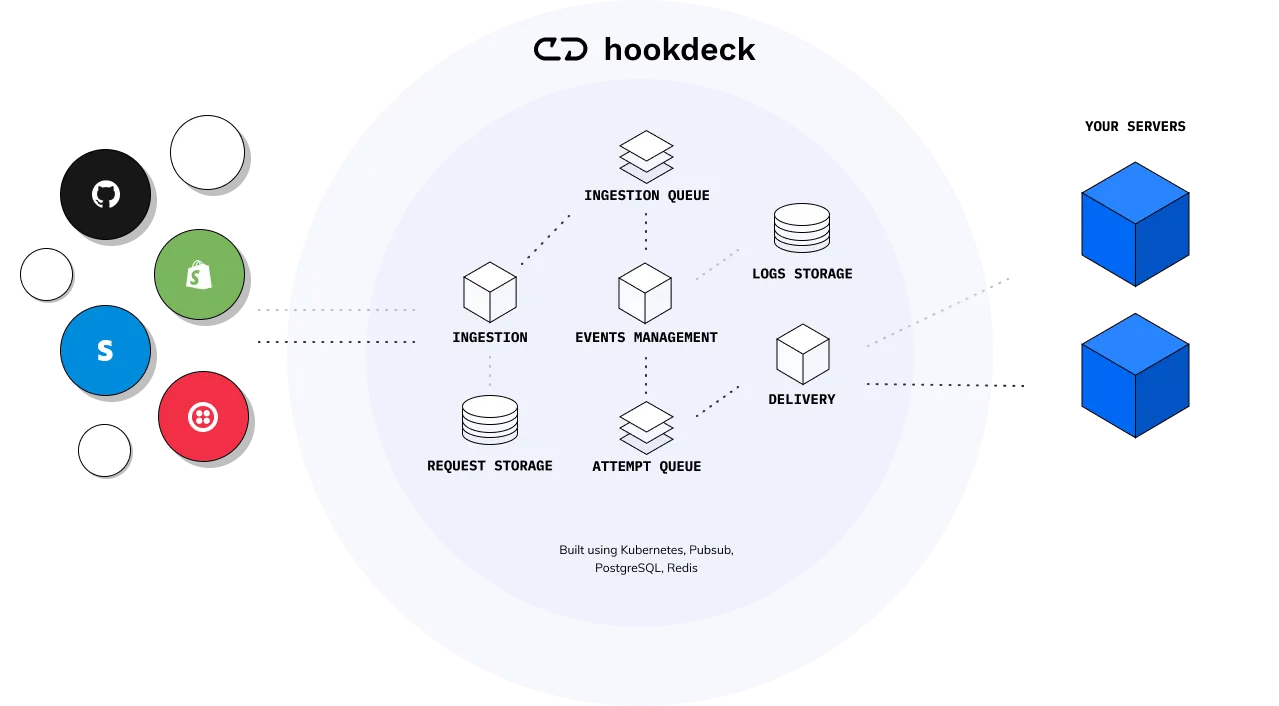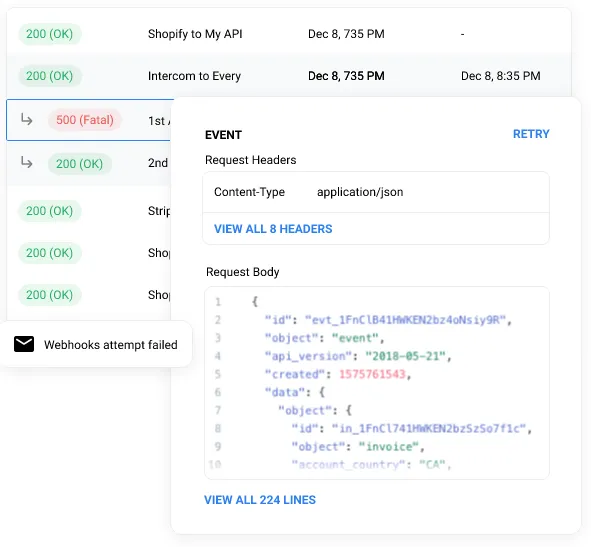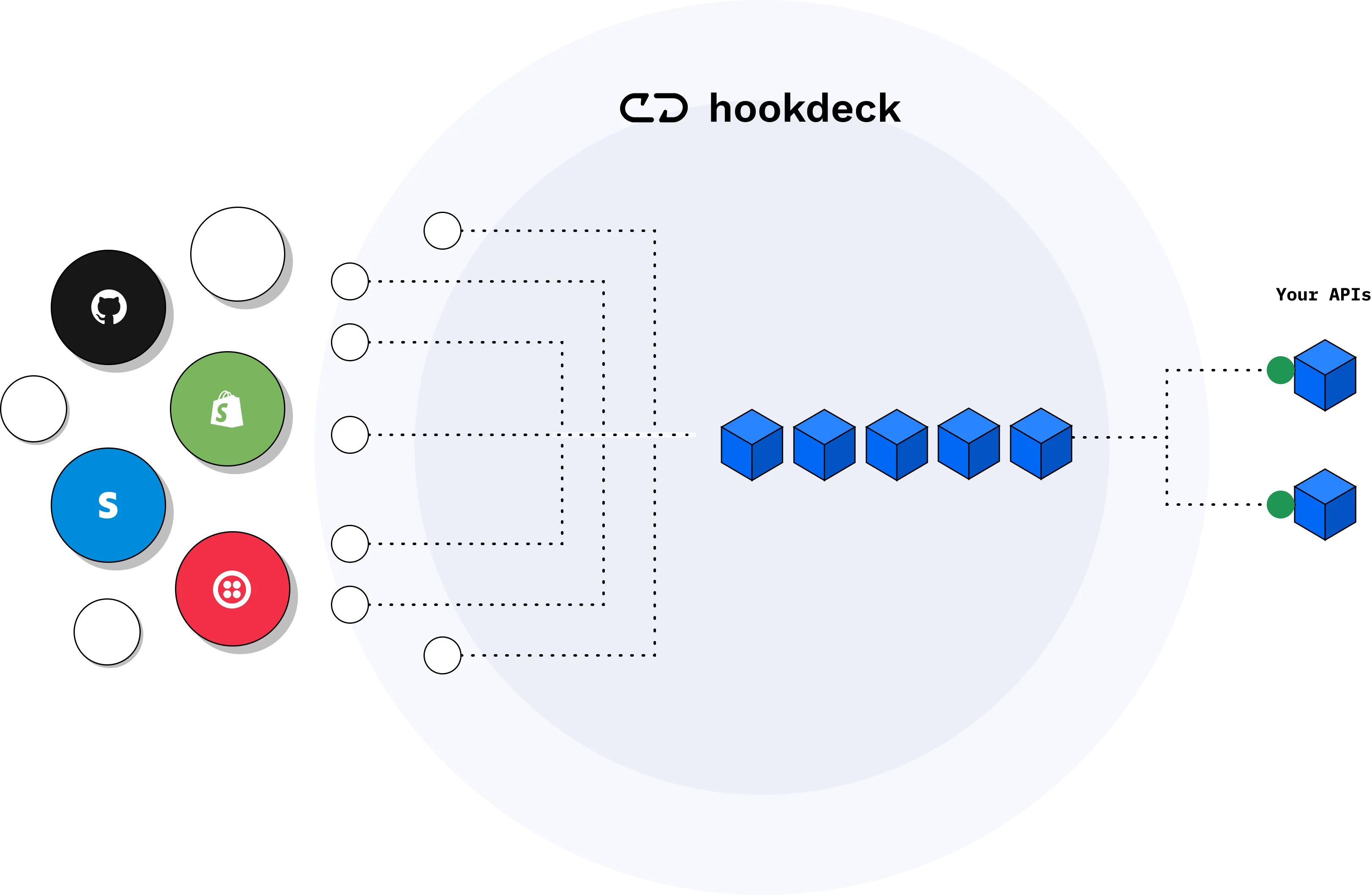Why You Should Use Hookdeck in Your Next Project
The success or failure of a request can make all the difference when providing a service. It can mean the difference between your website making money or losing money, a user returning to your site or never visiting it again, a shining 5-star rating, or a damaging 1-star rating. Experience multiple failed requests across your web app, and you begin to see a decrease in customer retention, a significant drop in earnings, and overall customer dissatisfaction. Nobody wants that.
More often than not, failed requests indicate flaws in your system or infrastructure. Usually, this means your system is not set up to properly respond to a failed webhook request, or handle the type of traffic it is receiving from your webhook. This is where Hookdeck comes in.
How Hookdeck works

With Hookdeck, you now have a common interface, through which all of your webhooks are able to communicate with your API.
Hookdeck sits in between your webhook providers and your API, making sure that all requests are properly handled without dropping any requests. Hookdeck also provides total visibility into all transactions and events between your webhook requests and your API.
Five (5) reasons to use Hookdeck in your projects
1) We log everything
No information is lost on Hookdeck. Our system is set up to ensure that every single bit of information regarding your webhook request is captured and accessible to you. We also add metadata like request timestamps, the status of your requests, and even how many times the request has been attempted. Another feature is the intuitive dashboard Hookdeck provides: we don’t just capture data, we also help you make sense of it by visualizing your data in a way that is easily comprehensible.

Do you want your information in real-time, or at certain intervals? With Hookdeck, you can have both! You can also set up alerts to be notified when something important happens, so that you can take action promptly in order to keep your customers happy.
2) You will never be overloaded with requests
Every system has limited resources for handling requests. Once the limits of these resources are crossed, requests to your system will start to fail until the resources are freed up. At Hookdeck, we understand that every request is important to the success of your business, and that is why we have built a queuing system to hold requests in a pending list while your API is busy dealing with the load it can handle. Once your API is free to take more requests, we start forwarding the pending requests to your API for it to handle

With this in place, any spikes in traffic to your API are adequately handled to ensure that no request is dropped and your server is never overloaded.
3) Every failure deserves a second chance
Every engineer working on the reliability of a system understands that failure is inevitable. However, being unable to respond to failure can be damaging. This is why Hookdeck allows you to retry a failed request automatically, and even set the number of times you want the request to be retried when there is a failure.

In addition to being able to configure automatic retries, you can also go into the Hookdeck dashboard to manually retry a failed request.
4) We help you save money
Let’s be honest: you can build infrastructure that performs a lot of the same functions as Hookdeck. But would you rather spend time and money hiring staff to set up and configure the infrastructure that supports these functions from scratch, or use Hookdeck for as low a cost as the price of lunch? If you choose us, you won’t need to spend superfluous energy finding Senior System Engineers, System Architects, DevOps Engineers, and more. Instead, you will be able to spend your time delivering value to your customers and solving their real problems.
With Hookdeck, you don’t need to build your own features. We provide a queuing system, logging system, request tracing system, notification system, data visualization screens, and many other components that can be time-consuming to build. At Hookdeck, we have it all built, maintained, and ready to go for you. We even have a free tier you can start with right away!
5) You’re in control
You never have to compromise control over your webhook requests, no matter how much Hookdeck is doing for you. We put all the power in your hands to decide how your webhooks should be handled.
Using the Hookdeck dashboard, you can:
- View and configure how many times you want your webhook request to be attempted
- Schedule your webhook request attempts
- Limit the total number of requests to your API at any given time - Filter webhook events processed and sent to your API
- Easily browse your webhook events and many more
To make things more interesting, you can also perform all these functions and more using the Hookdeck API. Our API is a programmatic RESTful interface that you can easily call within your applications and automated processes. We also have a CLI that will give you even more control over how your webhooks are handled.
Getting started is easy
One of the most attractive attributes of Hookdeck is how easy it is to get started. It has no system or installation requirements. You simply head over to the our web applicationand create your first webhook connection by:
- Adding your webhook provider (e.g. Stripe, Slack, GitHub, etc.)
- Adding your API destination endpoint
- Replacing your webhook provider’s destination endpoint with the one generated by Hookdeck
And that’s it! You now have all the power of Hookdeck managing your webhook.
Conclusion
When it comes to providing services to users, you need to make certain trade-offs. You can find yourself caught between spending time building reliability into your systems and spending time creating solutions to problems that add value to your customers. Both are important, but the former can be delegated while the latter cannot. Let Hookdeck manage your webhooks for you, while you give your customers the most of your time creating value and solving problems that matter. Get started with Hookdeck today for free.